|
|
|
Tourisme - Loisirs. Numero monografico di L'architecture d'Aujourd'hui, n. 61, septembre 1955. Legato assieme: Pologne: Habitations individuelles, constructions diverses. Numero monografico di: L'Architecture d'aujourd'hui, N. 62, novembre 1955
2 volumi in uno, 31 cm, rilegatura in tela, titolo al dorso, conserva le copertine originali; p. lxxviii, 112; lxxxvii, 115. Numerose illustrazioni e foto, alcune tav. ripiegate, ex libris di architetto al 1° frontespizio

|
|
|
Ungvar - Land: Ungarn/Galizien (= General-Karte von Mittel-Europa 1:200 000. 103. 40? 49?)
Wien, Kaiserlich-K?nigliches Milit?r-Geographisches Institut, 1914. Hochformat, ca. 38 x 55 cm, Ausgabe: mehrf?rbig; Zustand: gut +
书商的参考编号 : A111-121

|
|
|
Ungvar - Land: Ungarn/Galizien (= General-Karte von Mittel-Europa 1:200 000. 103. 40? 49?)
Wien, Kaiserlich-K?nigliches Milit?r-Geographisches Institut, 1889. Hochformat, ca. 38 x 55 cm, gefaltet zu 8 Segmenten, Ausgabe: mehrf?rbig; Zustand: gut +
书商的参考编号 : A141-1242

|
|
|
UNIVERSITAS JAGELLONICA,. Index lectionum (resp. sholarum) in universitate studiorum Jagellonica (ad annos) 1819 - 1844. (in 25 Heften).
Cracoviae, typis academicis, 1819/44. Jeweils 12-16 Seiten. Alte Heftung. 4to.
书商的参考编号 : 445295
|
|
|
UNVORGREIFFLICHE GEDANCKEN VON DEM POHLNISCHEN INTERREGNO ÜBERHAUPT, Wie auch von der anjetzo bevorstehenden Pohlnischen Königs-Wahl. Nebst Allerhand dahin gehörigen Historischen und Politischen Erleuterungen. Aus dem Englischen übersetzet.
Cölln, bey der Compagnie, (1733). 24 S. Neue Broschur (durchgehend feuchtrandig).
书商的参考编号 : 1195235
|
|
|
UNZER TSAYT. SOTSYALISTISHE HOYDESH-SHRIFT. [UNZER CAJT] Vol I (1927), Nrs. 3 & 4.
Varshe [Warsaw]: Farlag "di Velt", 1928. Paper Wrappers, 8vo, 95 pages. Monthly Bundist periodical ran from Vol. I, Nr, 1 (Oct. 1927) to 1932. 23 cm. In Yiddish. Unobtrusive Bund rubber stamp on some volumes. For example, Levin (1977) reports that it was in UNZER TSAYT that the very first reports of the Bund's split over the National Question with the Russian Social Democrats were published (in 1927). The Bund in Poland, here providing its unique Polish Jewish Socialist anti-Zionist perspective. The General Jewish Labour Bund in Lithuania, Poland and Russia (Yiddish: algemeyner yidisher arbeter-bund in lite, poyln un rusland), generally called The Bund or the Jewish Labour Bund, was a secular Jewish socialist party.... founded in Vilnius on October 7, 1897
..In 1917 the Polish part of the Bund, which dated to the times when Poland was a Russian territory, seceded from the Russian Bund and created a new Polish General Labor Bund which continued to operate in Poland in the years between the two world wars
.The Bund sought to unite all Jewish workers in the Russian Empire into a united socialist party, and also to ally itself with the wider Russian social democratic movement to achieve a democratic and socialist Russia. The Russian Empire then included Lithuania, Latvia, Belarus, Ukraine and most of present-day Poland, areas where the majority of the world's Jews then lived. They hoped to see the Jews achieve a legal minority status in Russia. Of all Jewish political parties of the time, the Bund was the most progressive regarding gender equality, with women making up more than one-third of all members. The Bund actively campaigned against anti-Semitism. It defended Jewish civil and cultural rights and rejected assimilation. However, the close promotion of Jewish sectional interests and support for the concept of Jewish national unity (klal yisrael) was prevented by the socialist universalism of the Bund. The Bund avoided any automatic solidarity with Jews of the middle and upper classes and generally rejected political cooperation with Jewish groups that held religious, Zionist or conservative views. Even the anthem of the Bund, known as "the oath" (di shvue in Yiddish), written in 1902 by Sh. An-ski, contained no explicit reference to Jews or Jewish suffering. At the heart of the vision of the future of the Bund was the idea that there is no contradiction between the national aspect on the one hand and the socialist aspect on the other. As a strictly secular organization, the Bund renounced the Holy Land and the sacred language (Hebrew) and chose to speak Yiddish
.In its early years the Bund had remarkable success, gaining an estimated 30,000 members in 1903 and an estimated 40,000 supporters in 1906, making it the largest socialist group in the Russian Empire
. the Bund was a founding collective member at the RSDLP's first congress in Minsk in March 1898. For the next 5 years, the Bund was recognized as the sole representative of the Jewish workers in the RSDLP, although many Russian socialists of Jewish descent, especially outside of the Pale of Settlement, joined the RSDLP directly
.The Bund generally sided with the party's Menshevik faction led by Julius Martov and against the Bolshevik faction led by Vladimir Lenin during the factional struggles in the run-up to the Russian Revolution of 1917
.In the Polish areas of the [Russian] empire, the Bund was a leading force in the 1905 revolution. At that time the organization probably reached the height of its influence. It called for an improvement in living standards, a more democratic political system and the introduction of equal rights for Jews. At least in the early stages of the first Russian Revolution, the armed groups of the "Bund" were likely the strongest revolutionary force in Western Russia. During the following years, the Bund went into a period of decay
.The Bund eventually came to strongly oppose Zionism, arguing that emigration to Palestine was a form of escapism. The Bund did not advocate separatism. Instead, it focused on culture, rather than a state or a place, as the glue of Jewish nationalism.
. The Bund also promoted the use of Yiddish as a Jewish national language and to some extent opposed the Zionist project of reviving Hebrew. The Bund won converts mainly among Jewish artisans and workers, but also among the growing Jewish intelligentsia. It led a trade union movement of its own. It joined with the Poalei Zion (Labour Zionists) and other groups to form self-defense organisations to protect Jewish communities against pogroms and government troops. During the Russian Revolution of 1905 the Bund headed the revolutionary movement in the Jewish towns, particularly in Belarus and Ukraine
..In 1921, the Communist Bund [in the USSR] dissolved itself and its members sought admission to the Communist Party....Many former Bundists, like Mikhail Liber and David Petrovsky, perished during Stalin's purges in the 1930s. The Polish Bundists continued their activities until 1948. During the latter half of the 20th century the Bundist legacy was represented through the International Jewish Labor Bund, a federation of local Bundist groups around the world
.Among the exiled Bundists who went on with Socialist politics in America was Baruch Charney Vladeck (18861938), elected to the New York Board of Aldermen as a Socialist in 1917
[and] 1937 [and] manager of The Jewish Daily Forward
Moishe Lewis (18881950)....the father of David Lewis (19091981), a leader of the New Democratic Party in Canada
.David Dubinsky (18921982), though never formally a member of the party, had joined the bakers' union, which was controlled by the Bund, and was elected assistant secretary within the union by 1906
..He later became a member of the Socialist Party of America, helped found the American Labor Party in 1936 and was from 1932 till 1966 the leader of the International Ladies' Garment Workers' Union
..under the name Max Goldfarb, David Petrovsky (18861937) was a member of the Central Committee of the Jewish Socialist Federation of America, a member of the Socialist Party of America, and the labor editor of The Forward (Wikipedia). SUBJECT(S) : Jews -- Poland -- Periodicals. Jewish labor unions -- Periodicals. Socialism and Judaism -- Periodicals. Yiddish literature -- Poland -- Periodicals. OCLC Number: 642969688. OCLC lists only 4 runs (Arizona State, Stanford, LOC, U of Washington), all of which appear to be incomplete. Nr. 3-4 was printed as Nr. 3 (Dec. 15, 1927), but then has Nr. 4 (Dec. 20, 1927) on a superimposed lable--not sure if Nr. 3 actually existed or in what form. Interestingly, evey copy of this issue that we have ever seen has had pages 1-6 removed, perhaps by the publisher and related to the re-issuing as a later number. We offer pages 1-6 here in facimile. Good Condition. (Y-1-10) xx
|
|
|
UNZER TSAYT. SOTSYALISTISHE HOYDESH-SHRIFT. [UNZER CAJT] 1928, Nrs. 2, 3/4, 5, 8/9, 10
Original Paper Wrappers, 8vo, ca. 100 pages. Monthly Bundist periodical ran from Vol. I, Nr, 1 (Oct. 1927) to 1932. 23 cm. In Yiddish. Unobtrusive Bund rubber stamp. Levin (1977) reports that it was in UNZER TSAYT that the very first reports of the Bund's split over the National Question with the Russian Social Democrats were published (in 1927). The Bund in Poland, here providing its unique Polish Jewish Socialist anti-Zionist perspective. The General Jewish Labour Bund in Lithuania, Poland and Russia (Yiddish: algemeyner yidisher arbeter-bund in lite, poyln un rusland), generally called The Bund or the Jewish Labour Bund, was a secular Jewish socialist party.... founded in Vilnius on October 7, 1897
..In 1917 the Polish part of the Bund, which dated to the times when Poland was a Russian territory, seceded from the Russian Bund and created a new Polish General Labor Bund which continued to operate in Poland in the years between the two world wars
.The Bund sought to unite all Jewish workers in the Russian Empire into a united socialist party, and also to ally itself with the wider Russian social democratic movement to achieve a democratic and socialist Russia. The Russian Empire then included Lithuania, Latvia, Belarus, Ukraine and most of present-day Poland, areas where the majority of the world's Jews then lived. They hoped to see the Jews achieve a legal minority status in Russia. Of all Jewish political parties of the time, the Bund was the most progressive regarding gender equality, with women making up more than one-third of all members. The Bund actively campaigned against anti-Semitism. It defended Jewish civil and cultural rights and rejected assimilation. However, the close promotion of Jewish sectional interests and support for the concept of Jewish national unity (klal yisrael) was prevented by the socialist universalism of the Bund. The Bund avoided any automatic solidarity with Jews of the middle and upper classes and generally rejected political cooperation with Jewish groups that held religious, Zionist or conservative views. Even the anthem of the Bund, known as "the oath" (di shvue in Yiddish), written in 1902 by Sh. An-ski, contained no explicit reference to Jews or Jewish suffering. At the heart of the vision of the future of the Bund was the idea that there is no contradiction between the national aspect on the one hand and the socialist aspect on the other. As a strictly secular organization, the Bund renounced the Holy Land and the sacred language (Hebrew) and chose to speak Yiddish
.In its early years the Bund had remarkable success, gaining an estimated 30,000 members in 1903 and an estimated 40,000 supporters in 1906, making it the largest socialist group in the Russian Empire
. the Bund was a founding collective member at the RSDLP's first congress in Minsk in March 1898. For the next 5 years, the Bund was recognized as the sole representative of the Jewish workers in the RSDLP, although many Russian socialists of Jewish descent, especially outside of the Pale of Settlement, joined the RSDLP directly
.The Bund generally sided with the party's Menshevik faction led by Julius Martov and against the Bolshevik faction led by Vladimir Lenin during the factional struggles in the run-up to the Russian Revolution of 1917
.In the Polish areas of the [Russian] empire, the Bund was a leading force in the 1905 revolution. At that time the organization probably reached the height of its influence. It called for an improvement in living standards, a more democratic political system and the introduction of equal rights for Jews. At least in the early stages of the first Russian Revolution, the armed groups of the "Bund" were likely the strongest revolutionary force in Western Russia. During the following years, the Bund went into a period of decay
.The Bund eventually came to strongly oppose Zionism, arguing that emigration to Palestine was a form of escapism. The Bund did not advocate separatism. Instead, it focused on culture, rather than a state or a place, as the glue of Jewish nationalism.
. The Bund also promoted the use of Yiddish as a Jewish national language and to some extent opposed the Zionist project of reviving Hebrew. The Bund won converts mainly among Jewish artisans and workers, but also among the growing Jewish intelligentsia. It led a trade union movement of its own. It joined with the Poalei Zion (Labour Zionists) and other groups to form self-defense organisations to protect Jewish communities against pogroms and government troops. During the Russian Revolution of 1905 the Bund headed the revolutionary movement in the Jewish towns, particularly in Belarus and Ukraine
..In 1921, the Communist Bund [in the USSR] dissolved itself and its members sought admission to the Communist Party....Many former Bundists, like Mikhail Liber and David Petrovsky, perished during Stalin's purges in the 1930s. The Polish Bundists continued their activities until 1948. During the latter half of the 20th century the Bundist legacy was represented through the International Jewish Labor Bund, a federation of local Bundist groups around the world
.Among the exiled Bundists who went on with Socialist politics in America was Baruch Charney Vladeck (18861938), elected to the New York Board of Aldermen as a Socialist in 1917
[and] 1937 [and] manager of The Jewish Daily Forward
Moishe Lewis (18881950)....the father of David Lewis (19091981), a leader of the New Democratic Party in Canada
.David Dubinsky (18921982), though never formally a member of the party, had joined the bakers' union, which was controlled by the Bund, and was elected assistant secretary within the union by 1906
..He later became a member of the Socialist Party of America, helped found the American Labor Party in 1936 and was from 1932 till 1966 the leader of the International Ladies' Garment Workers' Union
..under the name Max Goldfarb, David Petrovsky (18861937) was a member of the Central Committee of the Jewish Socialist Federation of America, a member of the Socialist Party of America, and the labor editor of The Forward (Wikipedia). SUBJECT(S) : Jews -- Poland -- Periodicals. Jewish labor unions -- Periodicals. Socialism and Judaism -- Periodicals. Yiddish literature -- Poland -- Periodicals. OCLC Number: 642969688. OCLC lists only 4 runs (Arizona State, Stanford, LOC, U of Washington), all of which appear to be incomplete. Use wear, paper brwoning but not fragile. Good Condition. (y-1-11)
|
|
|
UNZER TSAYT. SOTSYALISTISHE HOYDESH-SHRIFT. [UNZER CAJT] 1929, NRS. 1/2, 3, 4/5 (COMPLETE THIS VOLUME)
Original Paper Wrappers, 8vo, ca. 100 pages. Monthly Bundist periodical ran from Vol. I, Nr, 1 (Oct. 1927) to 1932. 23 cm. In Yiddish. Unobtrusive Bund rubber stamp. Levin (1977) reports that it was in UNZER TSAYT that the very first reports of the Bund's split over the National Question with the Russian Social Democrats were published (in 1927). The Bund in Poland, here providing its unique Polish Jewish Socialist anti-Zionist perspective. The General Jewish Labour Bund in Lithuania, Poland and Russia (Yiddish: algemeyner yidisher arbeter-bund in lite, poyln un rusland), generally called The Bund or the Jewish Labour Bund, was a secular Jewish socialist party.... founded in Vilnius on October 7, 1897
..In 1917 the Polish part of the Bund, which dated to the times when Poland was a Russian territory, seceded from the Russian Bund and created a new Polish General Labor Bund which continued to operate in Poland in the years between the two world wars
.The Bund sought to unite all Jewish workers in the Russian Empire into a united socialist party, and also to ally itself with the wider Russian social democratic movement to achieve a democratic and socialist Russia. The Russian Empire then included Lithuania, Latvia, Belarus, Ukraine and most of present-day Poland, areas where the majority of the world's Jews then lived. They hoped to see the Jews achieve a legal minority status in Russia. Of all Jewish political parties of the time, the Bund was the most progressive regarding gender equality, with women making up more than one-third of all members. The Bund actively campaigned against anti-Semitism. It defended Jewish civil and cultural rights and rejected assimilation. However, the close promotion of Jewish sectional interests and support for the concept of Jewish national unity (klal yisrael) was prevented by the socialist universalism of the Bund. The Bund avoided any automatic solidarity with Jews of the middle and upper classes and generally rejected political cooperation with Jewish groups that held religious, Zionist or conservative views. Even the anthem of the Bund, known as "the oath" (di shvue in Yiddish), written in 1902 by Sh. An-ski, contained no explicit reference to Jews or Jewish suffering. At the heart of the vision of the future of the Bund was the idea that there is no contradiction between the national aspect on the one hand and the socialist aspect on the other. As a strictly secular organization, the Bund renounced the Holy Land and the sacred language (Hebrew) and chose to speak Yiddish
.In its early years the Bund had remarkable success, gaining an estimated 30,000 members in 1903 and an estimated 40,000 supporters in 1906, making it the largest socialist group in the Russian Empire
. the Bund was a founding collective member at the RSDLP's first congress in Minsk in March 1898. For the next 5 years, the Bund was recognized as the sole representative of the Jewish workers in the RSDLP, although many Russian socialists of Jewish descent, especially outside of the Pale of Settlement, joined the RSDLP directly
.The Bund generally sided with the party's Menshevik faction led by Julius Martov and against the Bolshevik faction led by Vladimir Lenin during the factional struggles in the run-up to the Russian Revolution of 1917
.In the Polish areas of the [Russian] empire, the Bund was a leading force in the 1905 revolution. At that time the organization probably reached the height of its influence. It called for an improvement in living standards, a more democratic political system and the introduction of equal rights for Jews. At least in the early stages of the first Russian Revolution, the armed groups of the "Bund" were likely the strongest revolutionary force in Western Russia. During the following years, the Bund went into a period of decay
.The Bund eventually came to strongly oppose Zionism, arguing that emigration to Palestine was a form of escapism. The Bund did not advocate separatism. Instead, it focused on culture, rather than a state or a place, as the glue of Jewish nationalism.
. The Bund also promoted the use of Yiddish as a Jewish national language and to some extent opposed the Zionist project of reviving Hebrew. The Bund won converts mainly among Jewish artisans and workers, but also among the growing Jewish intelligentsia. It led a trade union movement of its own. It joined with the Poalei Zion (Labour Zionists) and other groups to form self-defense organisations to protect Jewish communities against pogroms and government troops. During the Russian Revolution of 1905 the Bund headed the revolutionary movement in the Jewish towns, particularly in Belarus and Ukraine
..In 1921, the Communist Bund [in the USSR] dissolved itself and its members sought admission to the Communist Party....Many former Bundists, like Mikhail Liber and David Petrovsky, perished during Stalin's purges in the 1930s. The Polish Bundists continued their activities until 1948. During the latter half of the 20th century the Bundist legacy was represented through the International Jewish Labor Bund, a federation of local Bundist groups around the world
.Among the exiled Bundists who went on with Socialist politics in America was Baruch Charney Vladeck (18861938), elected to the New York Board of Aldermen as a Socialist in 1917
[and] 1937 [and] manager of The Jewish Daily Forward
Moishe Lewis (18881950)....the father of David Lewis (19091981), a leader of the New Democratic Party in Canada
.David Dubinsky (18921982), though never formally a member of the party, had joined the bakers' union, which was controlled by the Bund, and was elected assistant secretary within the union by 1906
..He later became a member of the Socialist Party of America, helped found the American Labor Party in 1936 and was from 1932 till 1966 the leader of the International Ladies' Garment Workers' Union
..under the name Max Goldfarb, David Petrovsky (18861937) was a member of the Central Committee of the Jewish Socialist Federation of America, a member of the Socialist Party of America, and the labor editor of The Forward (Wikipedia). SUBJECT(S) : Jews -- Poland -- Periodicals. Jewish labor unions -- Periodicals. Socialism and Judaism -- Periodicals. Yiddish literature -- Poland -- Periodicals. OCLC Number: 642969688. OCLC lists only runs (Arizona State, Stanford, LOC, U of Washington), all of which appear to be incomplete. Very light wear, a beautiful set! Very Good Condition. (Y-1-12) xx
|
|
|
V PIELGRZYMKA 1997 W FOTOGRAFIACH I HOMILIACH. Z Czym Idziemy w Nowe Tysiaclecie.
(Codice RE/3779) Square octavo, 132 pp. First edition. Polish text, colour illustrations. Hardcover, fine. ~~~ SPEDIZIONE IN ITALIA SEMPRE TRACCIATA

|
|
|
VECCHIA E NUOVA PIANIFICAZIONE ECONOMICA IN POLONIA. Traduzione di Dario Tosi. A cura di Tosi Dario, Vitello Vincenzo.
In-8, brossura, sovracoperta, pp. 333. Volume della collana: Saggi di economia e scienze sociali n. 2. In buono stato (good copy).

|
|
|
Vicende della chiesa cattolica di amendue i riti nella Polonia e nella Russia da Caterina II sino a' giorni nostri di libri cinque preceduti da un rapido cenno sull'origine e suelle relazioni della chiesa russa con la santa sede sino a' tempi di Pietro il Grande per un sacerdote dell'oratorio. versione italiana.
Sc. G.
|
|
|
Vie économique du Royaume de Pologne. Royaume du Congrès de 1815. Ier volume, IIIe fascicule de l’Encyclopédie Polonaise, publiée par le Comité des publications encyclopédiques sur la Pologne.
Fribourg - Lausanne, Publications Encyclopédiques sur la Pologne 1917, 245x165mm, 210pages, broché. Bon état.
书商的参考编号 : 57997

|
|
|
Vie économique de la Pologne prussienne. Ier volume, VIe fascicule de l’Encyclopédie Polonaise, publiée par le Comité des publications encyclopédiques sur la Pologne.
Fribourg - Lausanne, Publications Encyclopédiques sur la Pologne 1917, 245x165mm, XVI- 205pages, broché.
书商的参考编号 : 57998

|
|
|
Vie économique de la Galicie et de la Silésie de Cieszyn. Ier volume, Ve fascicule de l’Encyclopédie Polonaise, publiée par le Comité des publications encyclopédiques sur la Pologne.
Fribourg - Lausanne, Publications Encyclopédiques sur la Pologne 1917, 245x165mm, 151pages, broché.
书商的参考编号 : 57999
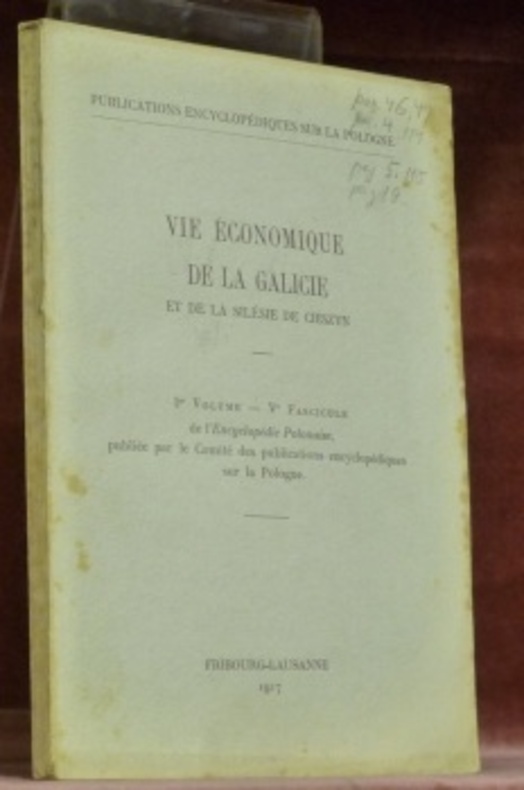
|
|
|
Vie (Le) d'Italia. Rivista mensile del Touring Club Italiano. Organo ufficiale dell'Ente Nazionale per le Industrie Turistiche. Anno XXXVI: NN. 1-12. (Segnaliamo: Nuova ferrovia da Civitavecchia a Orte; ferrovia in Val di Fiemme - Maschere e burattini a Bologna - Escursione del T.C.I. in Sardegna e Corsica - Sulle strade còrse - Navi romane nel lago di Nemi - Riforma dei trasporti collettivi a Roma - L'Istituto Naz. di Ottica in Arcetri - Sviluppi del Porto di Genova - La Val di Chiana e le sue acque - Il Palazzo Pretorio a Figline Val d'Arno - Bagni di Lucca - Val di Nievole - L'Accademia Navale di Livorno - Arte italiana in Polonia - L'Imperiale di Pesaro - Gli Ingegneri militari italiani all'estero - Come nasce un centro balneare - Bagnara di Calabria - Trieste nel fervore delle nuove opere - Vecchie città ed edifici nuovi - Genesi e sviluppo della bonifica in Italia - Una città scomparsa: Misa (presso Marzabotto) - La Triennale di Arti Decorative a Monza - L'Idroscalo di Milano - La nuova stazione viaggiatori di Milano - La bicicletta moderna - L'Isola di Lagosta, ecc.).
Milano, T.C.I., 1930, annata completa in 12 fasc., raccolti in volume unico, in-8, t. tela coeva, titolo e filettature oro al dorso, pp. 960 in numerazione continua + 616 (Vita del Touring - Notizie ed echi). Con numerose ill. in b.n. e pubblicità d'epoca.
|
|
|
Vie (Le) del Mondo. Rivista mensile della Consociazione Turistica Italiana. Anno V, N. 12. (PESTALOZZA C., Cina e Giappone - MASIA M., L'Arabia Saudiana - GOBBI BELCREDI A. M., Aspetti e risorse della Polonia - GILBERTI R., Italiani nel Brasile - WORMSTALL M., Le Colonie tedesche).
Milano, C.T.I., 1937, in-8, br., pp. XII, (125). Copertina e 4 tavv. a col., numerose ill. fotografiche in b.n., cartine e pubblicità.
|
|
|
Warschau - Land: Russland (= General-Karte von Mittel-Europa 1:200 000. 30. 39? 52?)
Wien, Kaiserlich-K?nigliches Milit?r-Geographisches Institut, 1914. Hochformat, ca. 34 x 55 cm, Ausgabe: mehrf?rbig; Zustand: gut +
书商的参考编号 : A111-111

|
|
|
Warschau - Land: Russland (= General-Karte von Mittel-Europa 1:200 000. 30. 39? 52?)
Wien, Kaiserlich-K?nigliches Milit?r-Geographisches Institut, 1890. Hochformat, ca. 34 x 55 cm, gefaltet zu 4 Segmenten, Ausgabe: mehrf?rbig; Zustand: gut +
书商的参考编号 : A141-1195

|
|
|
Wladydlaw Hasior. XXXV biennale de Venize, 1970, section polonaise
22x23 cm, brossura illustrata; pp. (16), numerose tavole nel testo, testo in francese

|
|
|
Wystawa ksiazki i ilustracji. Luty - marzec 1962. Centralne Biuro Wystaw Artystycznych.
Warszawa. (1962). 36 nicht nummerierte Textseiten u. 85 Bildseiten auf Kunstdruckpapier. Zweifarbiger Originalumschlag. (Einband teils berieben u. etwas fleckig. Papier teils gebräunt). 22x23 cm
书商的参考编号 : 15869
|
|
|
XXV LE-YOVL HESHRAYIM VE-CHOMESH [SPECIAL ISSUE OF HA-SHOMER HA-TSA? IR : ? ITON HA-BOGRIM SHEL HISTADRUT "HA-SHOMER HA-TSA? IR."]
1st edition. Original photographic paper wrappers, 4to, 44 + [1] pages. Ha-Shomer ha-Za'ir newspaper, special issue for the twenty-fifth Jubilee, 1913-1938. Beautiful modernist design, both in font and use of photos, which appear throughout. The bi-weekly began in 1927 and ceased publication in 1939. SUBJECT (S) : Labor Zionists -- Poland -- Periodicals. Labor Zionists. OCLC appears to list 4 holdings of at least one issue (NYPL, Stanford, YIVO, OSU) , with unclear issue runs. Heavy wear to wrappers, but no loss of text, paper inside shows toning, as expected, but paper and internal binding remain solid ant strong. Good Condition Thus. (KH-9-12)
|
|
|
YUGNT-VEKER. ORGAN FUN YUGNT-BUND "TSUKUNFT" IN POYLN. NEW SERIES. BROKEN RUN OF THE FIRST ISSUES FOLLOWING LIBERATION (INCLUDING ALL OF THE 1ST 9 ISSUES! ) . RUNNING NRS. 1-9, 11/12, 15, 16; & 1949 (PARIS) NRS. 1 & 2
Varsha [i. E. Warsaw] & Paris: Tsukunft, 1946-49. Paper Wrappers, 4to (tabloid format) , 24 pages each issue. Many issues include photos or illustrations on cover. This Yiddish Socialist bi-monthly newspaper for Young people ran from Dec. 1, 1922 until sometime in 1949, in various formats at different times. Very interesting vision of a postwar world of Jewish Socialism by the surviving rememnant in Poland, clearly expressing the Bund position of Dokeit ("thereness") , remaining to build Jewish life within a socialist framework with other nationalities, rather than Zionism; this even on Polish soil in the immediate of the aftermath of the Shoah. SUBJECT(S) : Jewish socialists -- Poland -- Periodicals. Jewish youth -- Poland -- Periodicals. Jews -- Poland -- Periodicals. OCLC lists only 1 holding (NYPL) . Newsprint, so paper is brown, but for the most part very solid. What wear there is is at the extreme margins, with, no text loss (Y-28A)
|
|
|
YUGNT-VEKER. ORGAN FUN YUGNT-BUND "TSUKUNFT" IN POYLN. NEW SERIES. COMPLETE RUN OF THE POST-LIBERATION INCARNATION RUNNING NRS. 1-16; & 1949 (PARIS) NRS. 1 & 2
Varsha [i. E. Warsaw] & Paris: Tsukunft, 1946-49. Paper Wrappers, 4to (tabloid format) , 24 pages each issue. Many issues include photos or illustrations on cover. This Yiddish Socialist bi-monthly newspaper for Young people ran from Dec. 1, 1922 until sometime in 1949, in various formats at different times. Very interesting vision of a postwar world of Jewish Socialism by the surviving rememnant in Poland, clearly expressing the Bund position of Dokeit ("thereness") , remaining to build Jewish life within a socialist framework with other nationalities, rather than Zionism; this even on Polish soil in the immediate of the aftermath of the Shoah. SUBJECT(S) : Jewish socialists -- Poland -- Periodicals. Jewish youth -- Poland -- Periodicals. Jews -- Poland -- Periodicals. OCLC lists only 1 holding (NYPL) . Newsprint, so paper is brown, but for the most part very solid. What wear there is is at the extreme margins, with, no text loss (Y-28A)
|
|
|
YUGNT-VEKER. ORGAN FUN YUGNT-BUND "TSUKUNFT" IN POYLN. NEW SERIES. NR. 1. FIRST ISSUE IN ITS POST WAR CONFIGURATION, AND THE ONLY ISSUE PUBLISHED IN 1946,
Varsha [i. E. Warsaw]: Tsukunft, 1946. Paper Wrappers, 4to (tabloid format) , 24 pages. Photos on cover. This Yiddish Socialist bi-monthly newspaper for Young people ran from Dec. 1, 1922 until sometime in 1948, in various formats at different times. Very interesting vision of a postwar world of Jewish Socialism by the surviving rememnant in Poland, clearly expressing the Bund position of Dokeit ("thereness") , remaining to build Jewish life within a socialist framework with other nationalities, rather than Zionism; this even on Polish soil in the immediate of the aftermath of the Shoah. SUBJECT(S) : Jewish socialists -- Poland -- Periodicals. Jewish youth -- Poland -- Periodicals. Jews -- Poland -- Periodicals. OCLC lists only 1 holding (NYPL) . Newsprint, so paper is brown, but for the most part very solid. What wear there is is at the extreme margins, with, no text loss (Y-28A)
|
|
|
YUGNT-VEKER. ORGAN FUN YUGNT-BUND "TSUKUNFT" IN POYLN. NEW SERIES NRS. 1-9. 1ST 9 ISSUES IN ITS POST WAR CONFIGURATION. LOOSE ISSUES: 1947: NRS. 1 (2) , 2(3) , 3(4) , 4 (5) , 7-8 (8-9) , 11/12, 16;
Varsha [i. E. Warsaw] & Paris: Tsukunft, 1946-49. Paper Wrappers, 4to (tabloid format) , 24 pages each issue. Many issues include photos or illustrations on cover. This Yiddish Socialist bi-monthly newspaper for Young people ran from Dec. 1, 1922 until sometime in 1948, in various formats at different times. Very interesting vision of a postwar world of Jewish Socialism by the surviving rememnant in Poland, clearly expressing the Bund position of Dokeit ("thereness") , remaining to build Jewish life within a socialist framework with other nationalities, rather than Zionism; this even on Polish soil in the immediate of the aftermath of the Shoah. 1946 saw only one issue, as reflected by the running issue numbers, in paranteses following the issue number for 1947, above. SUBJECT(S) : Jewish socialists -- Poland -- Periodicals. Jewish youth -- Poland -- Periodicals. Jews -- Poland -- Periodicals. OCLC lists only 1 holding (NYPL) . Newsprint, so paper is brown, but for the most part very solid. What wear there is is at the extreme margins, with, no text loss (Y-28A) Price per issue
|
|
|
YUGNT-VEKER. ORGAN GEVIDMET DI INTERESN FUN DER ARBAYTER-YUGNT. [JUGNT-WEKER]. LOOSE ISSUES: NR. 20 (VOL IV, NR. 5, JULY 25, 1925) , 23 (VOL IV, NR. 8, NOV. 20, 1925) ; NR. 37 (VOL. 5, NR. 11, OCT. 5, 1926)
Varsha [i. E. Warsaw]: Di Welt, 1925-26. Paper Wrappers, 8vo (pamphlet format) , ca. 36 pages each issue. This Yiddish Socialist Monthly/Semimonthly magazine for Young people ran from Dec. 1, 1922 until sometime in 1948. In addition to these issues from 1925-26 out of Warsaw, the journal was later published instead in Lodz and Paris, and was edited, in succession, by L. Hechtman, J. Mendelsohn, J. Gutgold, & L. Blit. SUBJECT(S) : Jewish socialists -- Poland -- Periodicals. Jewish youth -- Poland -- Periodicals. Jews -- Poland -- Periodicals. OCLC lists only 1 holding (NYPL) . Very Good Condition. (Y-27) Price is per issue
|
|
|
YUGNT-VEKER. ORGAN GEVIDMET DI INTERESN FUN DER ARBAYTER-YUGNT. 83 ISSUES FROM 1927-37, INCLUDING COMPLETE RUNS OF 1927 & 1928.
Varsha [i. E. Warsaw]: Di Welt, 1927-37. Paper Wrappers or Cloth, 4to (tabloid format) , 16 pages each issue. Partially Bound in Cloth. Many with photos or Socialist Realism illustrations on cover. This Yiddish Socialist bi-monthly newspaper for Young people ran from Dec. 1, 1922 until sometime in 1948, in various formats at different times. In addition to these issues from 1922-1937 out of Warsaw, the journal was later published instead in Lodz and Paris, and was edited, in succession, by L. Hechtman, J. Mendelsohn, J. Gutgold, & L. Blit. Issues present here are: 1927 [1(38) - 24(60) ]; 1928[1(61) - 24(84) ]; 1929 [ 2(86) -5(89) , 7(91) -10(94) , 12(96) , 13(97) , 16(100) , 18(102) , 19(103) , 21(105) , 22(106) , 25(109) ]; 1930 [2(111) -14(123) , 20(129) ]; 1934 [21(232) ]; 1931[7 (141) , 16(15) , 17(151) ]; 1937[6 (299) ]. SUBJECT(S) : Jewish socialists -- Poland -- Periodicals. Jewish youth -- Poland -- Periodicals. Jews -- Poland -- Periodicals. OCLC lists only 1 holding (NYPL) . Bound volume (1927-1928) has heavily worn boards. All are printed on newsprint, so paper is brown, sometimes fragile, sometimes not, generally not split at the binding but sometimes so. In any case, all wear is at the extreme margins, with, remarkably, no text loss whatsoever. (Y-28)

|
|
|
YUGNT-VEKER. ORGAN GEVIDMET DI INTERESN FUN DER ARBAYTER-YUGNT. SEPT 15 1922 ZAMLHEFT
Varsha [i. E. Warsaw]: Di Welt, 1922. Paper Wrappers, 4to (tabloid format) , 16 pages. This Yiddish Socialist bi-monthly newspaper for Young people ran from Dec. 1, 1922 until sometime in 1948, in various formats at different times. The journal was later published in Lodz and Paris, and was edited, in succession, by L. Hechtman, J. Mendelsohn, J. Gutgold, & L. Blit. SUBJECT(S) : Jewish socialists -- Poland -- Periodicals. Jewish youth -- Poland -- Periodicals. Jews -- Poland -- Periodicals. OCLC lists only 1 holding (NYPL) . Newsprint, so paper is brown & fragile, butall wear is at the extreme margins, with, remarkably, no text loss whatsoever. (Y-28)
|
|
|
YUGNT-VEKER. ORGAN GEVIDMET DI INTERESN FUN DER ARBAYTER-YUGNT. Loose Issues:
Nrs. 75(1928, Nr. 15); 92 (1929, Nr 8), 103 (1929, Nr. 19), 105 (1929, Nr. 21), 106 (1929, Nr. 22), 112 (1930, Nr 3), 114 (1930, Nr. 5), 115 (1930, Nr. 6), 118 (1930, Nr. 9), 119 (1930, Nr. 10), 120 (1930, Nr. 11), & 129 (1930, Nr. 20). Varsha [i. E. Warsaw]: Di Welt, 1929-30. Paper Wrappers, 4to (tabloid format) , 16 pages each issue. Many with photos or Socialist Realism illustrations on cover. This Yiddish Socialist bi-monthly newspaper for Young people ran from Dec. 1, 1922 until sometime in 1948, in various formats at different times. In addition to these issues from 1929-1930 out of Warsaw, the journal was later published in Lodz and Paris, and was edited, in succession, by L. Hechtman, J. Mendelsohn, J. Gutgold, & L. Blit. Issues present here are: SUBJECT(S) : Jewish socialists -- Poland -- Periodicals. Jewish youth -- Poland -- Periodicals. Jews -- Poland -- Periodicals. OCLC lists only 1 holding (NYPL) . Newsprint, so paper is brown, but solid, not split at the binding. In any case, all wear is at the extreme margins, with, remarkably, no text loss whatsoever. Good Condition(Y-28) . Price is per issue
|
|
|
Zamosc - Land: Russland (= General-Karte von Mittel-Europa 1:200 000. 56. 41? 51?)
Wien, Kaiserlich-K?nigliches Milit?r-Geographisches Institut, 1914. Hochformat, ca. 34 x 55 cm, gefaltet zu 8 Segmenten, Ausgabe: Zustand: gut +
书商的参考编号 : A111-135

|
|
|
Zamosc - Land: Russland (= General-Karte von Mittel-Europa 1:200 000. 56. 41? 51?)
Wien, Kaiserlich-K?nigliches Milit?r-Geographisches Institut, 1889. Hochformat, ca. 34 x 55 cm, gefaltet zu 8 Segmenten, Ausgabe: mehrf?rbig; Zustand: gut +
书商的参考编号 : A141-1209

|
|
|
ZEITSCHRIFT der Historischen Gesellschaft für die Provinz Posen. Jahrgang 7.
Posen, 1892. (6) 491 (70) S. Lwd der Zeit.
书商的参考编号 : 3450099
|
|
|
Ziemia Krakowska.
Krakow, Wydawnictwo Artystyczno-Graficzne, 1965, in-4, tela editoriale celeste con filetto sul piatto anteriore e titolo in oro sul dorso, pp. 52, [4] + 132 carte di illustrazioni fotografiche in nero. Bella descrizione del territorio intorno a Cracovia.

|
|
|
Zwiazek Polskich Artystow Plastykow Centralne Biuro Wystaw Artystycznuch. Wloska grafika wspolczesna. Wybor z III Biennale w Wenecii.
Riccamente ill. b/n f.t.; R. C6.
|
|
|
"... Claude Lefort Pierre Broue Branko Lazitch Annie Kriegel Michel Winock Gilles Martinet François Fetjö Bela Kiraly Janos Kovacs Adam Michnik Jiri Pelikan"
"1956 Varsovie-Budapest La deuxième révolution d'Octobre"
"1978. Paris Éditions du Seuil coll. Esprit 1978 - Broché 14 cm x 20 5 cm 263 pages - Textes de Branko Lazitch Pierre Broué Claude Lefort Michel Winock Gilles Martinet Annie Kriegel François Fetjö Bela Kiraly Janos Kovacs Adam Michnik Jiri Pelikan ... réunis par Pierre Kende et Krzysztof Pomian ; bibliographie présentation des auteurs index des noms - Bon état"
书商的参考编号 : 16748
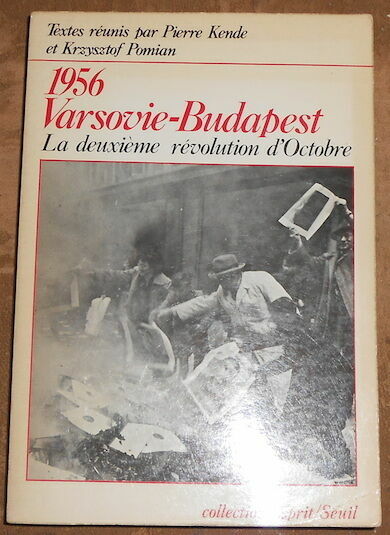
|
|
|
"[REPUBLIC OF POLAND. MINISTRY OF FOREIGN AFFAIRS]. [Jan Karski].
THE MASS EXTERMINATION of JEWS in GERMAN OCCUPIED POLAND. Note addressed to the Governments of the United Nations on December 10th, 1942, and other documents. - [INFORMING THE WEST OF THE HOLOCAUST]
London, New York, Melbourne (printed in Great Britain), Published on behalf of the Polish Ministry of Foreign Affairs, (1943). 8vo. Stapled as issued. Title-page printed in red. Stapels with rust, slightly affecting surrounding paper. A very fine, near mint, copy. 16 pp.
书商的参考编号 : 60182
|
|
|
"[REPUBLIC OF POLAND. MINISTRY OF FOREIGN AFFAIRS]. [Jan Karski].
THE MASS EXTERMINATION of JEWS in GERMAN OCCUPIED POLAND. Note addressed to the Governments of the United Nations on December 10th, 1942, and other documents. - [INFORMING THE WEST OF THE HOLOCAUST]
London, New York, Melbourne (printed in Great Britain), Published on behalf of the Polish Ministry of Foreign Affairs, (1943). 8vo. Stapled as issued. Title-page printed in red. Stapels with rust, slightly affecting surrounding paper. A very fine, near mint, copy. 16 pp.
书商的参考编号 : 60436
|
|
|
"A. Warnod et E. Woroniecki"
Einbeck
"1919. Paris éditions Le Triangle 1919 - Couv. rempliée broché 23 5 cm x 29 cm 24 pages + 32 32 ills hors-texte noir & blanc - Texte de A. Warnod et E. Woroniecki - Edition limitée à 417 ex. Un des 90 sur papier Arches (n° 54). - Etude et biographie de ce peintre polonais dans la mouvance de Matisse - Non coupé - De la collection de Marcel Bekus - Bon état"
书商的参考编号 : 4924
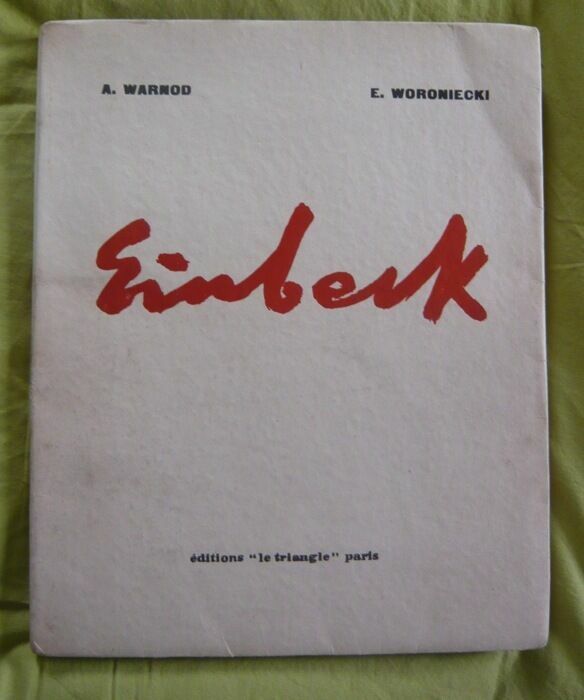
|
|
|
"Adam Schaff"
"Histoire et vérité essai sur l'objectivité de la connaissance historiqu"
"1971. Paris Éditions Anthropos 1971 - Broché couv. à rabat 14 cm x 22 cm 352 pages - Texte de Adam Schaff trad. de Anna Kaminska et Claire Brendel bibliographie - Etat neuf"
书商的参考编号 : 15104

|
|
|
"André Gide"
"Notes sur Chopin"
"1948. Paris Éditions L'Arche 1948 - Broché 14 5 cm x 22 5 cm VII+ 131 pages - Texte de André Gide - Bon état"
书商的参考编号 : 17925
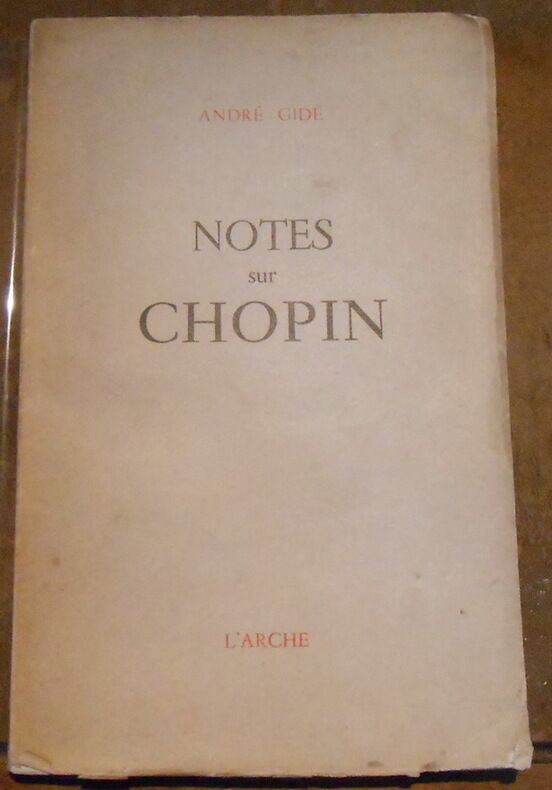
|
|
|
"Chil Aronson"
"Art polonais moderne"
"1929. Paris éditions Bonaparte 1929 - Broché 24 5 cm x 32 cm 95 pages - préface de Chil Aronson photos noir & blanc pleine page des oeuvres de Marcoussis Zamoyski Weiss Stryjenska Seifert Proaszko Menkes Kuna Kisling Hecht Cytrynowicz Aberdam etc. - Bon état"
书商的参考编号 : 8161
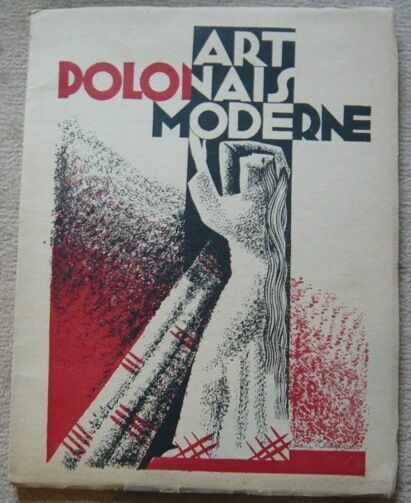
|
|
|
"Jean Jacquot Serge Ouaknine Odette Aslan Christian Aubert et Jean-Luc Bourbonnaud"
"Les voies de la création théâtrale volume I"
"1970. Paris Éditions du CNRS 1970 - Cartonné bien complet du rhodoïd 22 cm x 27 5 cm 347 pages photos noir & blanc in et hors-texte plans - Etudes du Théâtre Laboratoire de Wroclaw de Grotowsky de l'Odin Theatret de Eugenio Barba du Living Theater de l'Open Theater et du « Cimetière des Voitures » de Fernando Arrabal monté par Victor Garcia par Jean Jacquot Serge Ouaknine Odette Aslan Christian Aubert et Jean-Luc Bourbonnaud index - Etat neuf"
书商的参考编号 : 18885
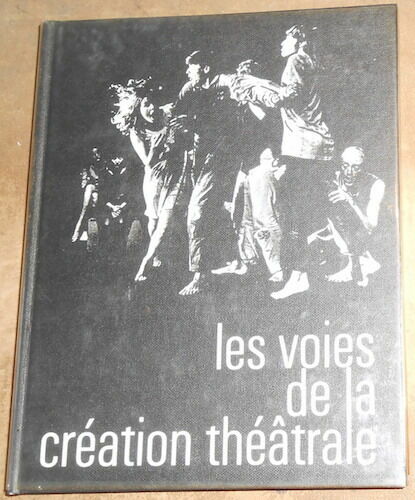
|
|
|
"Joseph Pilsudski"
"Souvenirs d'un Révolutionnaire"
"collection Collection Polonaise. Paris. 12 cm x 19 cm. 1933. Broché. 261 pages. Paris Société Française d'Éditions Littéraires et Techniques Collection Polonaise 1933. Broché 12 cm x 19 cm 261 pages. Texte de Joseph Pilsudski traduit par le Lieutenant- colonel Bté Charles Jèze et le Commandant J.-A. Teslar. Envoi en français du Commandant Teslar. Etat d'usage" "Etat correct"
书商的参考编号 : 100074775
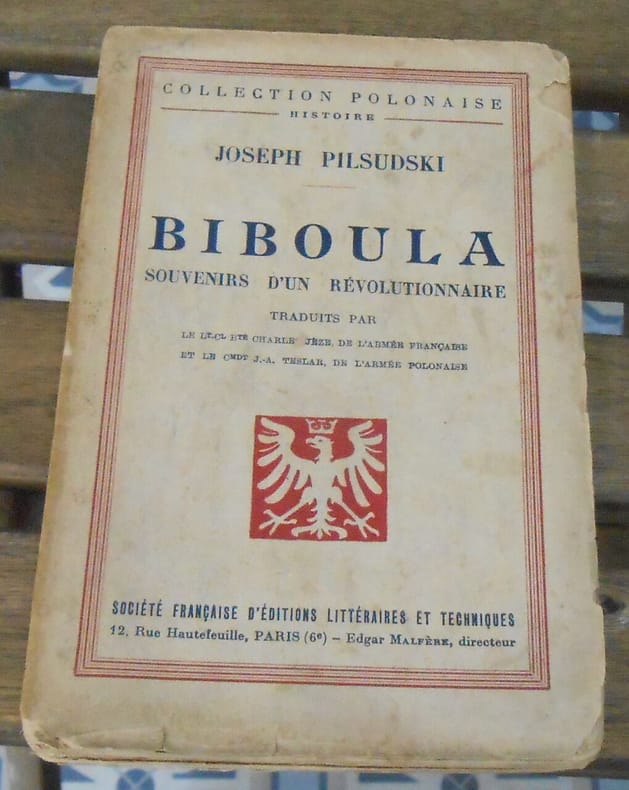
|
|
|
"Krzysztof Jasinski"
"Programme Operetka Witold Gombrowicz"
"Krakow (Pologne). 14 cm x 21 cm. 1978. Broché. 16 pages. Krakow (Pologne) Teatr Stu 1978. Agrafé 14 cm x 21 cm 16 pages illustrations in et hors-texte - Mise en scène de Krzysztof Jasinski illustrations de Jan Sawka distribution commentaires citations; texte en polonais. Très bon état" "Très bon état"
书商的参考编号 : 100074013
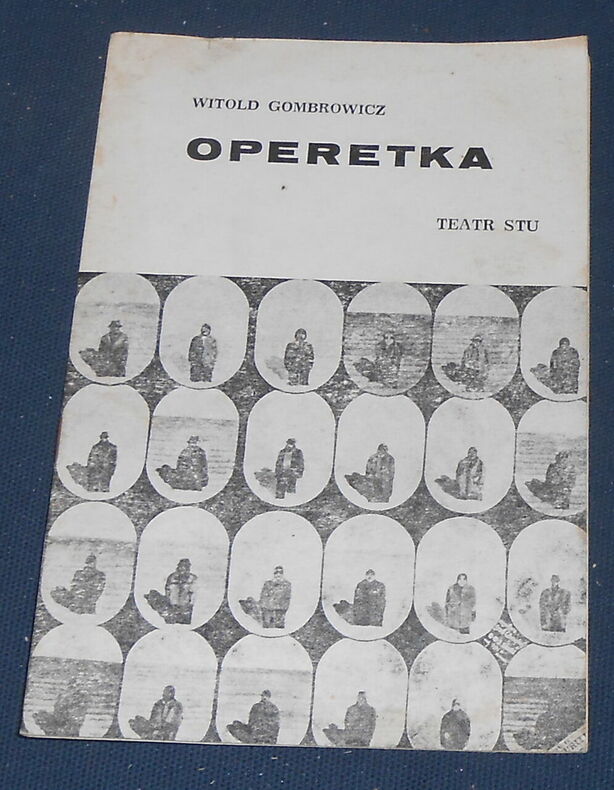
|
|
|
"M. Numa Raflin"
"Le placement et l'immigration des ouvriers agricoles polonais en France"
"1911. Paris Imprimerie nationale 1911 - Broché couv rempliée 15 cm x 23 cm 30 pages - Rapport présenté à M. le Ministre du Travail et de la Prévoyance sociale par M. Numa Raflin - Bon état"
书商的参考编号 : 6545
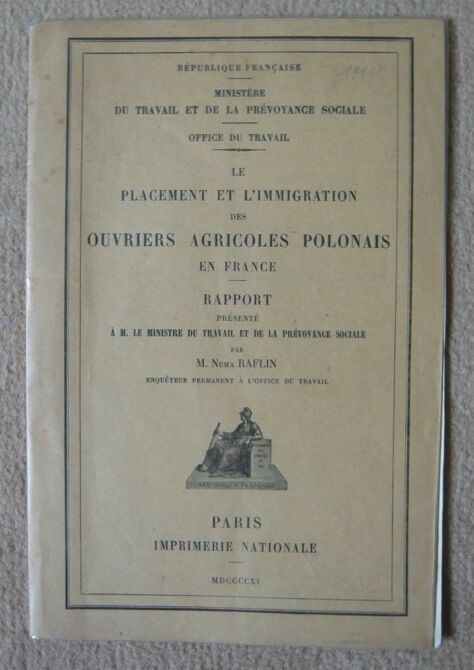
|
|
|
"Marian Schmidt"
"Marian Schmidt"
"1994. Paris Éditions du Cercle d'Art 1994 - Cartonné 26 5 cm x 31 cm 95 pages 81 photos noir & blanc pleine page - Photos de Marian Schmidt présentation de Edouard Boubat biographie bibliographie filmographie expositions - Très bon état"
书商的参考编号 : 17992
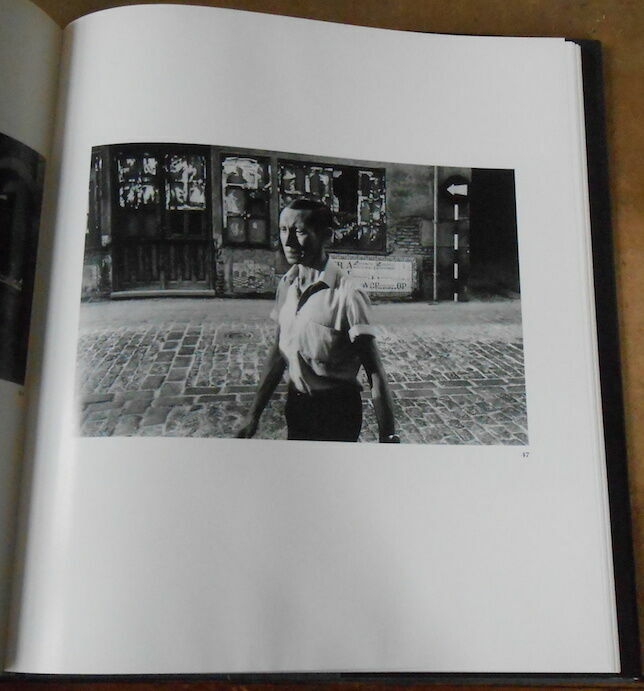
|
|
|
"Michel Seuphor"
"Poezja plastyka"
"1967. Lodz (Pologne) Muzeum Sztuki w Lodzi 1967 - Cartonné 18 cm x 24 cm 48 pages - Reproduction de 8 oeuvres de Michel Seuphor texte en français et en polonais de Ryszard Stalislawski et Jan Brezelowski biographie - Très bon état - ON joint une plaquette de 4 pages : Seuphor texte de S. Macdonald Wright et une reproduction de panneau plié les deux provenant de la Galerie Esther-Robles Los Angeles 1965 et une très belle lettre de Robert Maillart"
书商的参考编号 : 9922
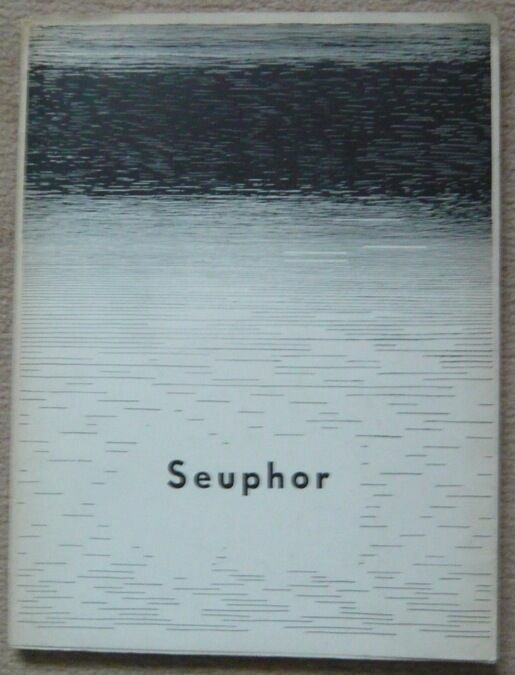
|
|
|
"Monika Krajewska"
"Czas Kamieni"
"1982. Varsovie éd Interpress 1982 - Cartonné format à l'italienne - 27 cm x 28 cm 165 photos noir et blanc pleine page - Bon état - Introduction de Anna Kaminska - Très belles photos sur les anciens cimetières juifs de Pologne"
书商的参考编号 : 1108

|
|
|
"Pierre Coche"
"Paysages et Chasses de Pologne"
"1934. Paris Société Française De Librairie Gebethner et Wol 1934 - Broché 17 cm x 22 5 cm 140 pages 65 photos et ills noir & blanc in et hors-texte - Texte de Pierre Coche préface du Comte Maurice Potocki ex-libris cynégétique - Dos restauré sinon bon état"
书商的参考编号 : 19048

|
|
|
"Rosa Luxembourg"
"Grève Générale - Parti et Syndicats"
"1947. Paris Éditions Spartacus 1947 - Broché 14 cm x 19 5 cm 79 pages - Texte de Rosa Luxembourg avant-propos de Bracke (Alexandre-Marie Desrousseaux) introduction de Froelich- Bon état"
书商的参考编号 : 17245

|
|
|